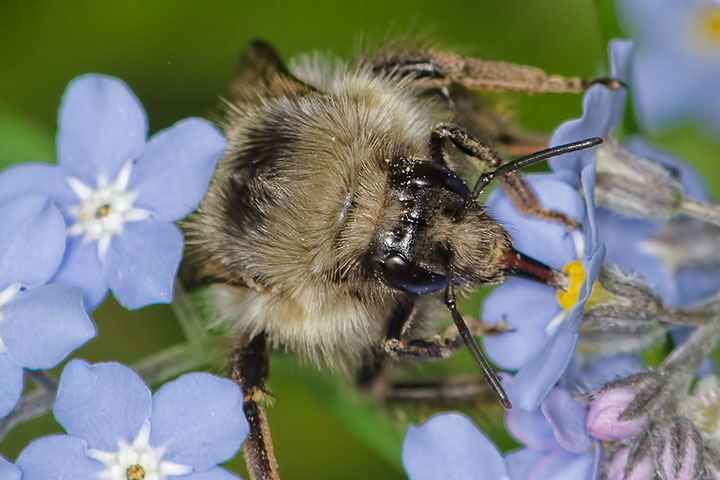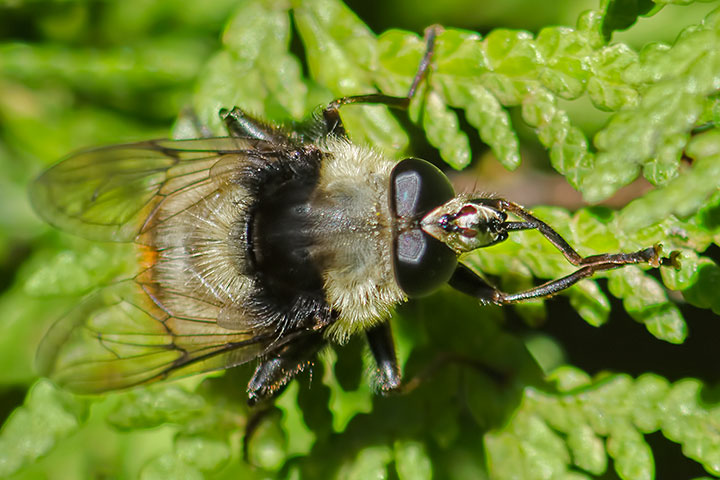A great deal of deception is perpetrated in the fields and woods: camouflage, feigning, mimicking. Fawns sport a dappled coat so as to vanish into the sun-flecked brush. Robins feign injuries to lure predators away from a nest. Flowers lacking nectar attract pollinators by mimicking flowers that deliver.
The topic du jour is the common practice of some types of fly to mimic a bee. A year ago, I treated this same topic, Telling bees from flies, with a more nicely matched pair of images. I now take another run at it using two pictures taken this last week.
A bee has a good defence against a bird that would eat it: it stings. A fly is not similarly armed, but some adopt the survival strategy of looking as if they were: they masquerade as a bee.
Although many flies are remarkably good at such mimicry—good enough to fool birds—differences can be seen. Some are subtle and may not be obvious in the field: bees have four wings; flies only two. Others are easier to spot: flies have larger eyes and smaller antennae than bees. Below is a picture of a bee and a plausible look-alike.
This is a bumble bee, a Bombus vagans (I think). It has long antennae and smallish eyes. This one has alighted on forget-me-nots and is using its tongue to sip nectar.

This is a fly, one of the hoverflies in the genus, Criorhina. Its eyes occupy a much larger portion of the head than do those of the bee. Indeed, this male’s eyes almost touch in the middle of the head. (The particularly large eyes of the male help it to find females). The fly cannot hide is enormous eyes, but it has an interesting way to compensate for its vanishingly small antennae, and it demonstrates it in this picture. The fly will extend its forelegs and wave them about in a simulation of the constantly probing antennae of bees.


Very nice “topic du jour” treatment. But now a question begs: why would a bee imitate a fly? And as a side note, as I imagine you are aware, it states in Keeping the Bees by York University mellitologist Laurence Packer that if you show a hive of experts on insects some photos of bees and flies, even they will get many of them wrong. Packer also has the congenial swiping remark:
“If all birds dropped dead tomorrow, only chicken farmers and academic ornithologists would be inconvenienced. If all bees died out, there would be worldwide food shortages and perhaps one-quarter of the human population would starve.”
Doug, sometimes the mimicry goes both ways. Some flies apparently will sample a plant that seems to have the sole function of making them taste bad to a bird. So, although a bird might eat one (and vomit), it will not eat another. The look-alike bee then benefits from the bird’s experience.
As to Packer’s posturing: the tree swallows around my home do a remarkably good job of scouring the yard of arthropods, and consider all those grubs and caterpillars being devoured by birds.
You can usually differentiate between bees and flies by their manner of flight. It would be difficult to describe in words the difference, but find one of each and scrutinize their flight behaviour and you’ll see. I wonder if it has to do with 2 wings vs. 4?
David, I thought I could see such a differences, but I lacked the confidence in the observation to assert that there was one. I will now watch for this.